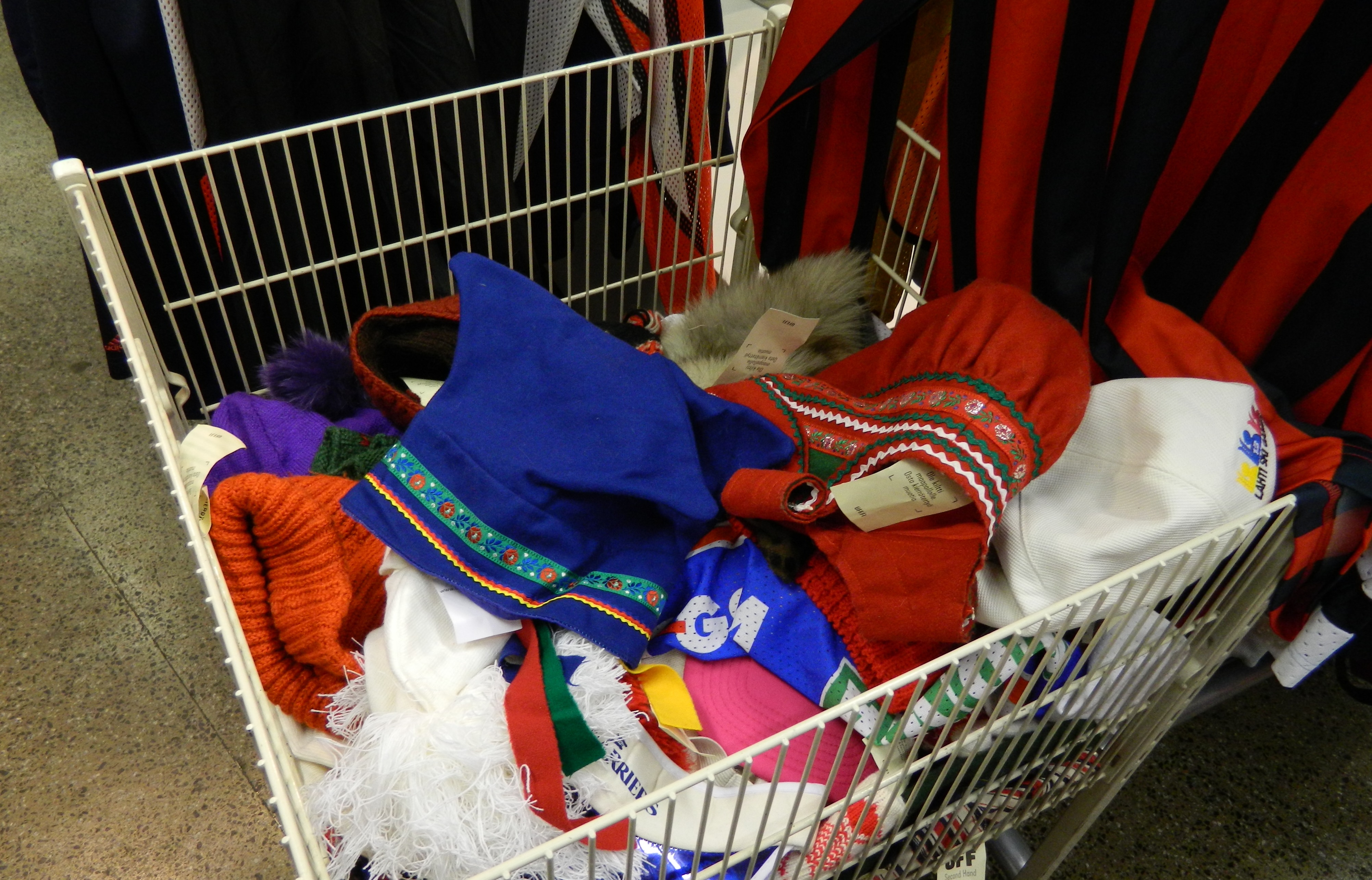Indigenous culture for sale or transmitting tradition forward?
In 2015 a Finnish Miss World candidate decided to wear Sámi national costume in the beauty contest. The decision stirred up a heated debate: the dress was not an original, carefully handmade gákti, Sámi national dress, but a cheap copy bought from a fancy-dress shop. The debate did not concern only the quality of the dress but also the right to wear it. The miss candidate apologized and the discussion settled. The questions of who is entitled to dress up gákti and who has the right to decide on this right, remained.
The photograph depicting blue and red woolen hats, found in the discount basket of the flea store, visualize and concretize the phenomenon called cultural appropriation. Through these hats, indigenous culture is objectified and taken to serve the interests of tourism industry. The hats resemble the traditional headdresses of Sámi people with the difference that they are aimed as souvenirs. Possibly they are made by Sámi people themselves but most likely they are not. Australian Aboriginals as well as Native American tribes have faced similar exploitation. To make a difference between poor copies and original handicrafts Aboriginals have discussed the need of an “authenticity brand”.
Usually the different kinds of visual elements, Sámi dresses, Maori tattoos, Native American headdresses, are the triggers of the debate as they are concrete, visual symbols. Authenticity is not an unambiguous concept, a stamp that is hit on the product and which solves the problem nicely. The problem is who has the right to decide which symbols are owned by a certain group and who has the right to decide on the authenticity of the culture. Religion, language or social relations could be argued to be a cultural property too – it is just easier to control dress than beliefs.
The core of the cultural appropriation is often seen to be the question of power: how the majority group use their dominant position to exploit and control the minority. In this definition there is a danger that the minority is seen as a united and cohesive group that drives the same goals. Sámi in itself is not an unambiguous concept. The minority is divided into several subgroups who argue about the “real” Sáminess and the right to practice the culture.
Traditionally gákti was not only a piece of clothing but it tells the region, place and genus of its wearer – according to Sámi activists. Old dressmaker tells a different story: “I don’t think I have done anything wrong when I sew Czech strips to an Italian fabric or French or Chinese velvet using French yarn and German-made machine [to make a Sámi costume]” (Lapin Kansa, 23.11.2017).
The quotation tells that nothing in visual culture is endogenous but rather borrowed from somebody to somewhere. Cultural historians trace back the many details of the traditional Sámi dress to the central Europe from where fur traders have brought them to the north. From the perspective of social sciences, the history of humankind is just a story of long cultural appropriation of ideas and practices. John Tomlinson (2003) argues that cultural identity is rather a product of globalization than its victim. Victimizing and victimization may not solve any problems that arise from appropriation. The more constructive way to approach the issue would be what Peter Shand (2002) defines as being reflexive about our roles, as consumers, researchers and members of the culture(s).
References:
Lapin Kansa 23.11.2017. Alatalo, M.: Vielä Lapinpuvuista [A Word about Sámi dresses]
Shand, P. (2002). Scenes from the colonial catwalk: cultural appropriation, intellectual property rights, and fashion. Cultural Analysis, 3, 47-88.
Tomlinson, J. (2003). Globalization and cultural identity. The global transformations reader, 2, 269-277.

Commentary on Rachel Tanur's Works: Daschund in Top Hat